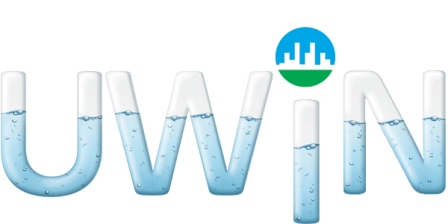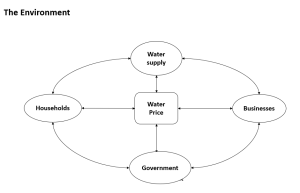Project A1-2
Project Team: Elizabeth Mack, PI – Michigan State University
Jessica Bolson – University of Pennsylvania
Gary Pivo – University of Arizona
David Hondula – Arizona State University
Project Overview
This project evaluates the economic impacts of water price increases on household income, regional income, and regional employment. Impacts on business output will also be estimated. This is important to consider given pressures on urban water systems such as aging infrastructure, growing populations, and climate change. These pressures mean that water costs will rise and place economic strains on businesses and households. From the business side, higher water costs could lead to increases in prices of inputs and salaries, and a lower willingness (and ability to pay) for business outputs by households. This strain on business outputs means that businesses may have to hire fewer workers. This reduction in the number of persons employed, increases the incidence of unemployment in households and reduces household income. Due to this reduction in household income, people will purchase fewer goods and services from businesses, which further reduces firm profits. In other words, there is a vicious cycle between many elements of water: water supply, water demand, water prices, business income, and household income.
This means that rising water prices are a sign not only of an environmental problem, but an economic problem. Environmental and economic water issues are interrelated, and have spillover effects. What further complicates this vicious cycle is the concentration of these impacts in people and households The downside of this duality is likely strongest for low-income households who likely use the least amount of water and also pay a larger proportion of their income for water than do high income households. The figure below highlights that key actors (including households, businesses, and government) interacting within the environment cyclically impact water supply and water prices, as well as one another. Government plays a role in this system of impacts through its levels of taxation on businesses and households, but also, and perhaps, most importantly in the context of water, in its attempts to regulate water use through water use restrictions.
Water use is often thought of primarily from an environmental point of view. Economic impacts are ignored, and this is particularly the case for low-income and disadvantaged households who have perhaps more fixed demands for water than do high-income consumers who demand is more flexible or elastic for water given the numerous ways in which they use water in their households (pools, hot tubs, watering lawns, etc.). This is distinct from low-income households who do not have pools and hot tubs to fill and perhaps even lawns to water. Their uses of water are more necessity oriented. From a water management standpoint then, the ways in which water use can be reduced, from a price perspective and also from a regulatory standpoint merit evaluation, especially from an equity standpoint. This is because market mechanisms for reducing water use via price are likely to disproportionately impact low-income households who will need to dedicate a larger proportion of household income to pay for water than will middle and high income households. Given this range of issues, the outcomes for this project seeks to provide information and educate a diverse range of individuals including households, stakeholders, and grassroots organizations about the pressures (demographic change, population growth, urbanization) behind increased water demand and water consumption as indicated by indicators such as water use per capita, water cost indices, and an empirical assessment of the impacts associated with water price increases. It will also use this information to work with these groups to construct water use regulation strategies that have more of an impact on regulating water use but also less disparate impacts on vulnerable, low-income households.


Recent Comments